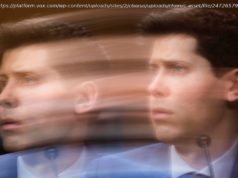Proposal would have made it considerably harder to amend state constitution. Plus, what it’s like to try and make dishes from The Bear
Good morning.
Ohio voters yesterday rejected a proposal that would have made it considerably harder to amend the state constitution in a major win for reproductive rights and democracy advocates in the state.
The result means that Ohio will keep its current process for amending the state constitution in place. The procedure first requires voters to collect a certain number of signatures from at least 44 of the state’s 88 counties to send an amendment proposal to the ballot and then a simple majority to pass it.
Issue 1, the proposal under consideration, would have made both of those steps harder. It would have required voters to collect signatures in all 88 counties and then required a supermajority of 60% to pass it.
It was the first time since 1926 that Ohio voters had cast ballots on a proposed constitutional amendment in August. Republicans, who control the state legislature, rushed the measure to the ballot in an effort to make it harder to pass a referendum to protect abortion rights, set for this fall. With a little over half of the vote counted, the “no” vote led 59% to 41%.
The hole in the ozone layer has begun to form early this year, prompting warnings that a larger-than-average hole may further warm the Southern Ocean while the level of Antarctic sea ice is at a record low.
Satellite data from the European Centre for Medium-Range Weather Forecasts suggests the hole has already begun to form over Antarctica.
Dr Martin Jucker, a lecturer at the Climate Change Research Centre at the University of New South Wales, said the hole usually began forming at the end of September, peaking in October before closing in November or December. “Starting in August is certainly very early,” he said. “We don’t usually expect that.”
The ozone hole is usually smaller during El Niño years, but modelling by Jucker and collaborators, including Chris Lucas of the Australian Bureau of Meteorology, has suggested it will be larger than usual in 2023, due to long-lasting atmospheric changes after the undersea Tonga volcano explosion in January last year.
Домой
United States
USA — Financial First Thing: Ohio voters reject Issue 1 in major win for reproductive...






